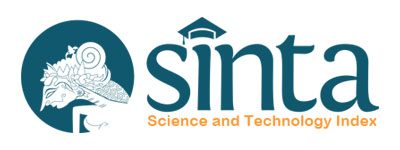ANALISIS VARIABEL KEBERHASILAN KUD (Studi Kasus di KUD Kabupaten Musi Banyuasin, Sumatera Selatan)
Abstract
ABSTRACT
Â
The aims of this research are to determine (1) the effect of variables to the success of cooperation in achieving an autonomous village cooperative; Â (2) to determine which of the seven variables has the strongest effect on the success of the village cooperative.
This research was mainly on the village cooperatives running in providing food and distributing production tools such as fertilizer, pesticide, prime seeds, and so on, in the Musi Banyuasin regency, South Sumatra province. The research location was determined based on the fact that the Musi Banyuasin Regency is one of the regencies located in South Sumatera which succeeded in developing the autonomous village cooperative. Sampling was applied to the village cooperatives which had been operating for more than two years and had corporate body at the time of investigation. As many as 47 autonomous village cooperatives were selected from the 147 available in the Musi Banyuasin regency.
A village cooperative is considered autonomous if it has fulfilled the 13 criteria of the Department of Cooperative. To measure the success of the cooperative, several indicators are used, they are Profit Margin, Liquidity Ratio, and Solvability Ratio. The variables influencing the success of the village cooperative in becoming an autonomous cooperative are member’s participation, operation volume, the board’s education, board’s experience, capital growth, business variation and service of the village cooperative involved.
The regression and regression coefficient test simultaneously showed highly significant influence on the indicators of profit margin, liquidity and solvability. This means that the suggested variables statistically determined toward the success of the village cooperative. The t-significance at a=1% showed that two variables highly influenced the success of the village cooperative, they were the operation volume and capital growth. This fulfils the autonomous cooperative criteria: the total operation volume has to be in proportion with the number of members and the capital equity has to be at least 25 million rupiah. This indicates that the core of success for the village cooperative rests on the operation volume and the capital growth: the higher the operation volume and capital growth, the better the marketing and financial performance of the village cooperative. From the management handling perspective, it is indicated that the higher the board’s education and the longer the experience, the higher the success of the village cooperative.
Â
Keywords: village cooperative.
Downloads
Issue
Section
License
Authors who publish with this journal agree to the following terms:- Authors retain copyright and grant the journal right of first publication with the work simultaneously licensed under a Creative Commons Attribution License that allows others to share the work with an acknowledgement of the work's authorship and initial publication in this journal.
- Authors are able to enter into separate, additional contractual arrangements for the non-exclusive distribution of the journal's published version of the work (e.g., post it to an institutional repository or publish it in a book), with an acknowledgement of its initial publication in this journal.
- Authors are permitted and encouraged to post their work online (e.g., in institutional repositories or on their website) prior to and during the submission process, as it can lead to productive exchanges, as well as earlier and greater citation of published work (See The Effect of Open Access).


















